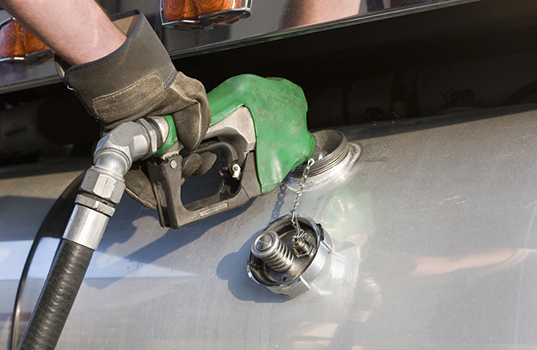Is there something wrong with diesel? That may seem like an odd question to ask—you don’t see stalled trucks littering the highways—but there have been concerns, and diesel quality is going to become even more important as newer engine technologies start hitting the road.
The most notable concern was the discovery over a decade ago of what appears to be widespread corrosion within the diesel fuel infrastructure after the switch to ultra-low sulfur diesel. Was this related? Perhaps, and perhaps not. And if so, how?
The Fuels Institute’s Crack the Code Experience session “Diesel Fuel Quality and Tank Maintenance” provided highlights from three projects focused on analyzing and maintaining diesel quality, including two driven by the Fuels Institute. That session is currently available on-demand.
Fred Passman, president of the microbial contamination-focused consultancy Biodeterioration Control Associates Inc., discussed some of the potential parameters responsible for causing corrosion in the diesel fuel storage infrastructure.
Passman described a laboratory study commissioned by the Coordinating Research Council (CRC) that aims to identify the primary factors that contribute to accelerating corrosion in a diesel fuel environment. It involves analyzing a range of microcosms, which were two-liter jars filled with various diesel/biodiesel blends and typical fuel additives, microbes, runoff nutrients, other contaminants and water. A metal corrosion coupon was also inserted from the air gap at the top, to the diesel in the middle and then to the water in the bottom.
A few preliminary findings stand out. First, the “sterile” microcosms didn’t stay sterile—microbial growth eventually developed to levels comparable with other microcosms. Second, water is critical for microbial growth.
“We don’t see any corrosion, and we don’t see a bio burden developing in the microcosms that did not have a water phase,” said Passman. “All it takes is a trace of water for it to take off.” The study is expected to be released by the end of the year.
Spencer Parkinson, executive director of Decision Innovation Solutions which focuses on such areas as agricultural policy analysis and economic modeling, discussed the Fuels Institute’s Diesel Fuel Quality Council’s (DFQC) Diesel Fuel Sampling Study. This study took 131 nozzle and 190 tank samples, randomly selected an incorporating a proportional number of samples from every Petroleum Administration for Defense District (PADD) across the country, with the goal being to obtain a snapshot of the fuel quality that was being introduced into the market.
The samples were tested for up to nine variables, such as oxidation stability, total acid number, the presence of ethanol, water and sediment. The tank tests included samples from the middle and bottom of the tank.
Parkinson noted several key, but preliminary, takeaways. For the nozzle samples, all PADDs met industry standards, except for oxidation stability, flash point and appearance, which were out of specification in at least one PADD each.
For tank samples, the middle layer samples had better quality than bottom layer samples, as was expected. At least one PADD did not meet industry standards in each area except for water and sediment. Amanda Applebaum, Fuels Institute director of research, shared that members of the DFQC will be carefully reviewing the results of the sample analysis to determine if there are material lessons to be learned or additional research that should be undertaken to assist stakeholders in their efforts to improve fuel quality. The study is expected to be released by the end of the year.
Jeff Hove, Fuels Institute vice president, finished the presentation with a review of the Diesel Fuel Quality Council’s efforts to establish best practices for retailers and distributors to follow in order to preserve diesel fuel quality and provide proper tank maintenance. He noted that the studies covered earlier are helping with these efforts. Also involved in the project are fleet operators, equipment manufacturers, retailers, trade associations, government agencies and industry service providers. The focus is on distribution, storage and dispensing.
While corrosion remains a concern, a core driver behind the project is the changeover of fleets from tier 3 to more efficient (but demanding) tier 4 engines that require high quality diesel fuel.
“As a fuel is being delivered, what steps can you take to reduce cross-contamination?” Hove asked. “Are you using a dedicated compartment for transport? Is that not possible because of market dynamics and resources? Where can the industry make changes to reduce contamination?”
One idea that is becoming clear is the need to remove far more water from the system. “The industry as a whole has to begin looking at having a zero-water mentality,” he said. “We know that standards allow for one-quarter of an inch water of water in the bottom of the tank. But I think if there is any water at all, especially free-phase water, you want to do what you can to get it out of there.”
The NACS Crack the Code Experience runs through December 4 and features 24/7 access to forward-looking ideas and insights, plus innovative new-to-channel products and strategic connections. There’s still time to register for on-demand access to education sessions.









